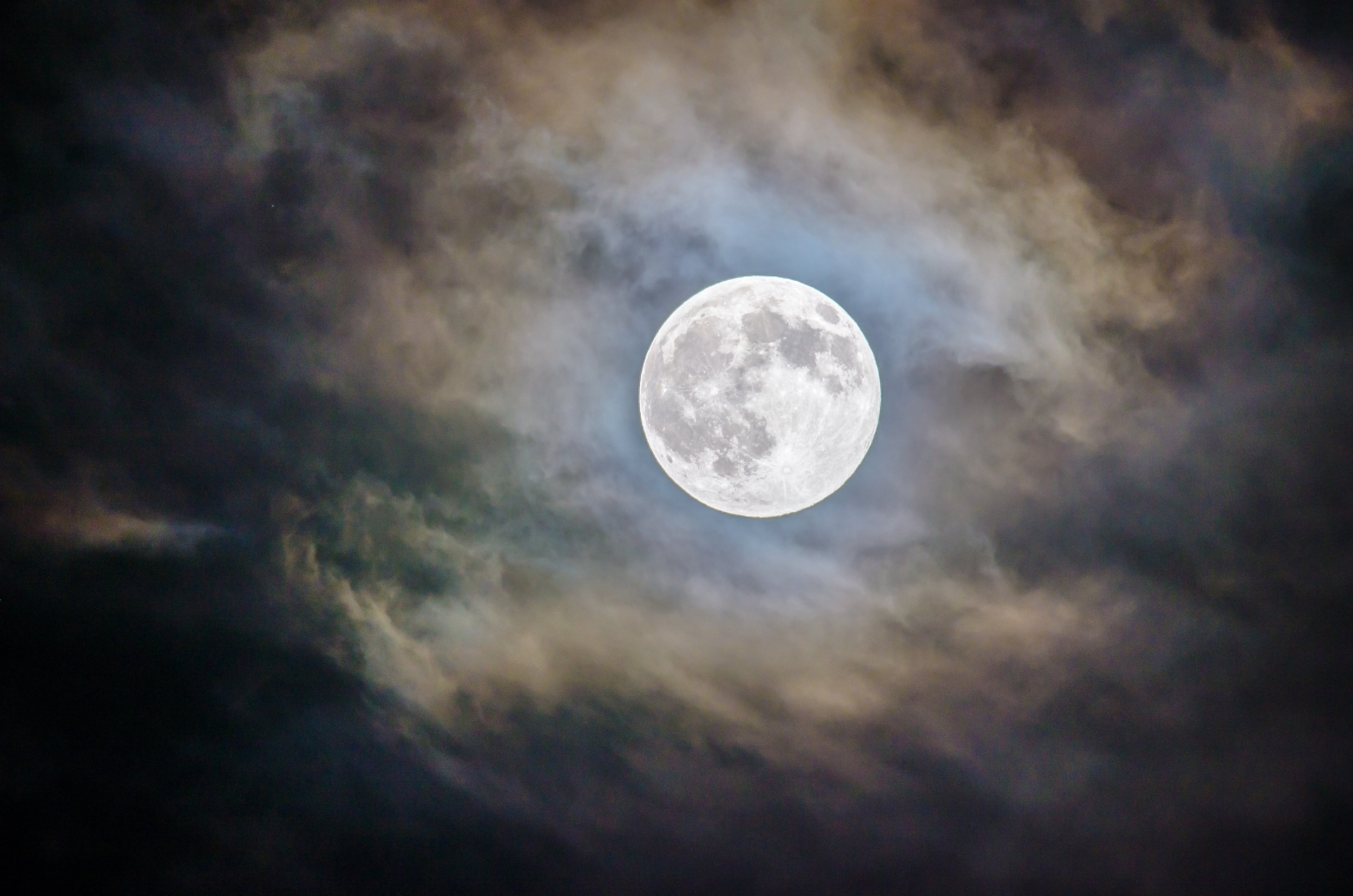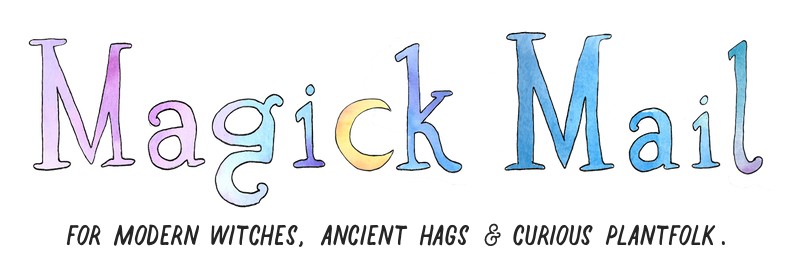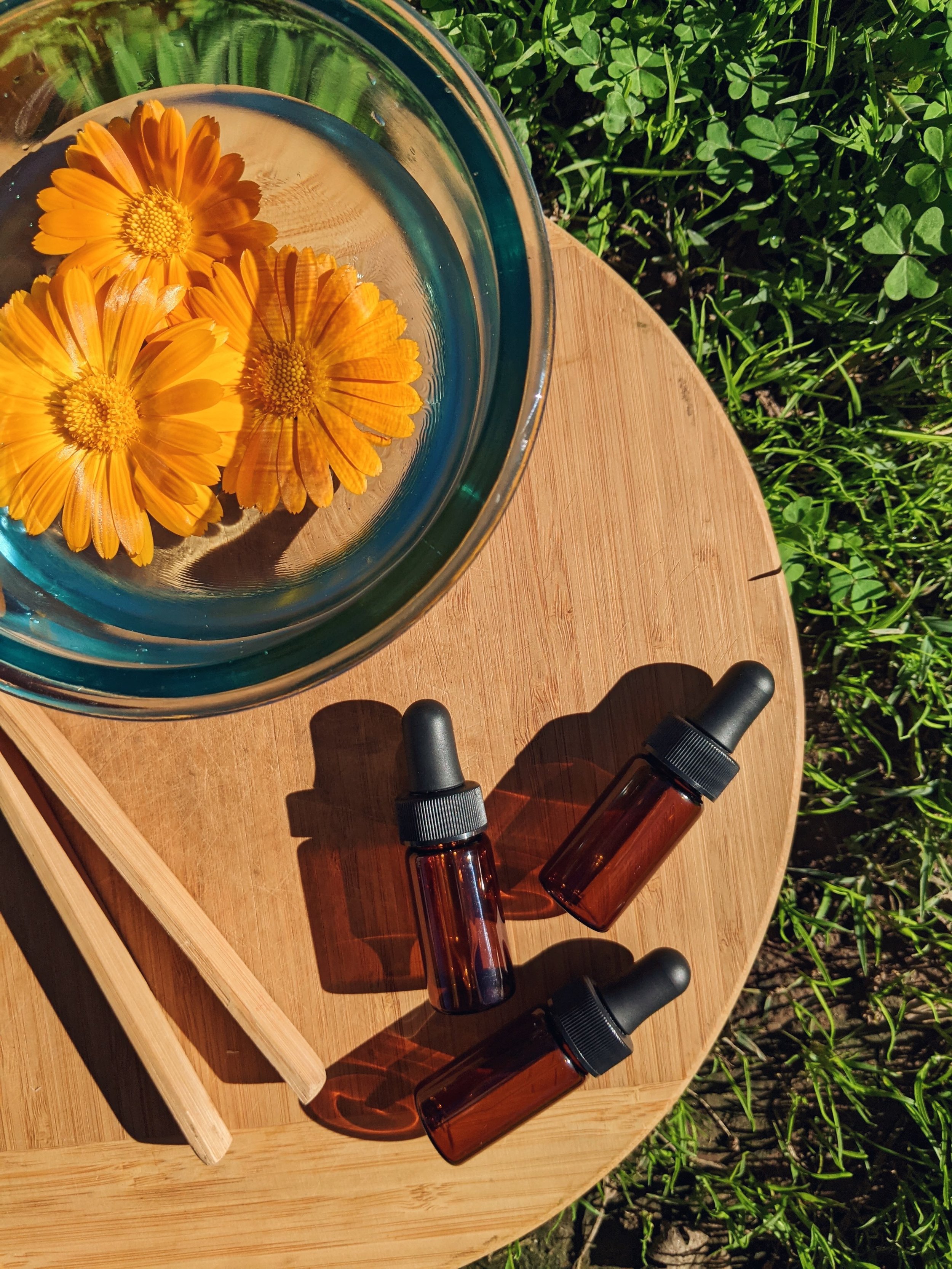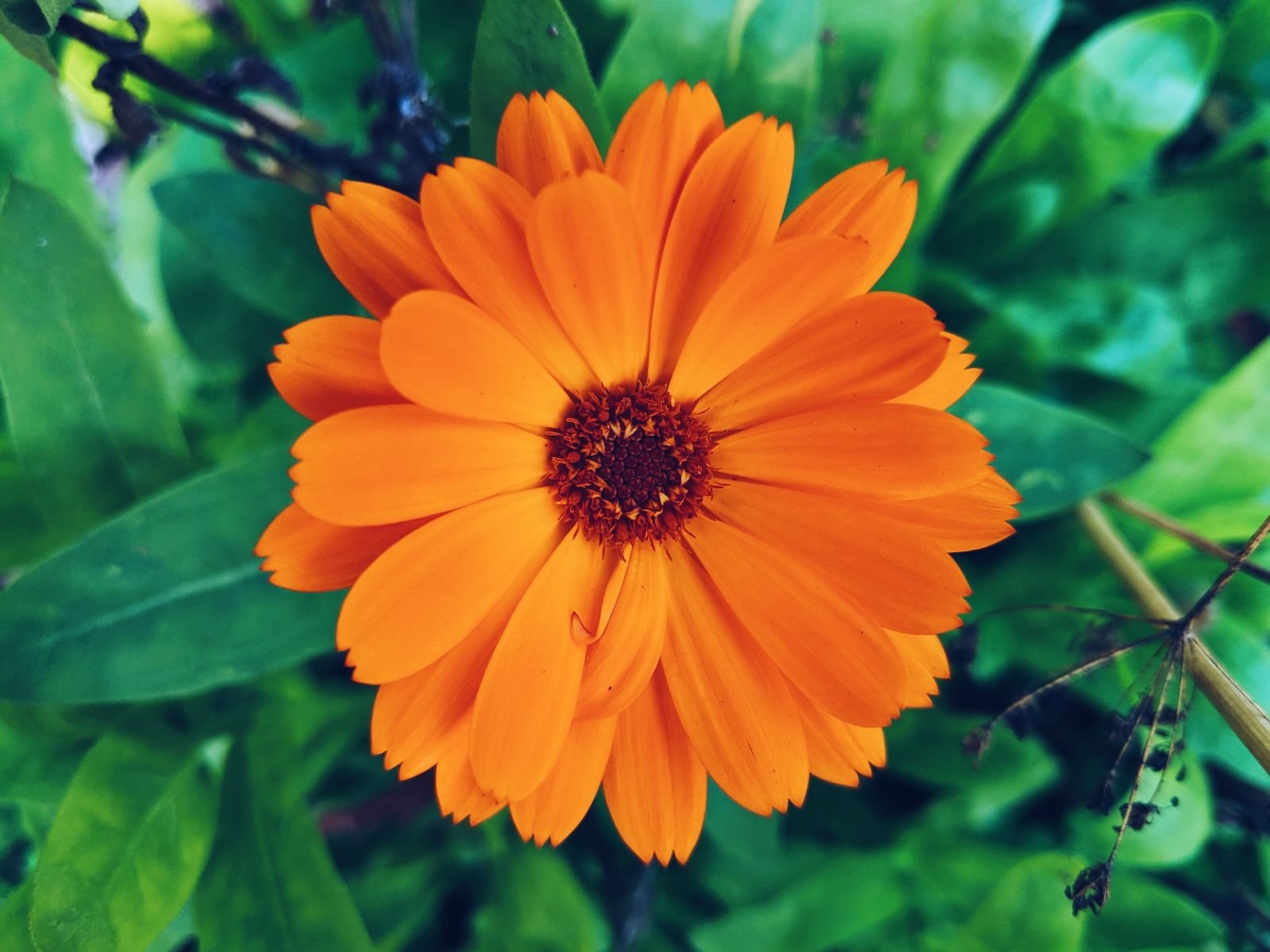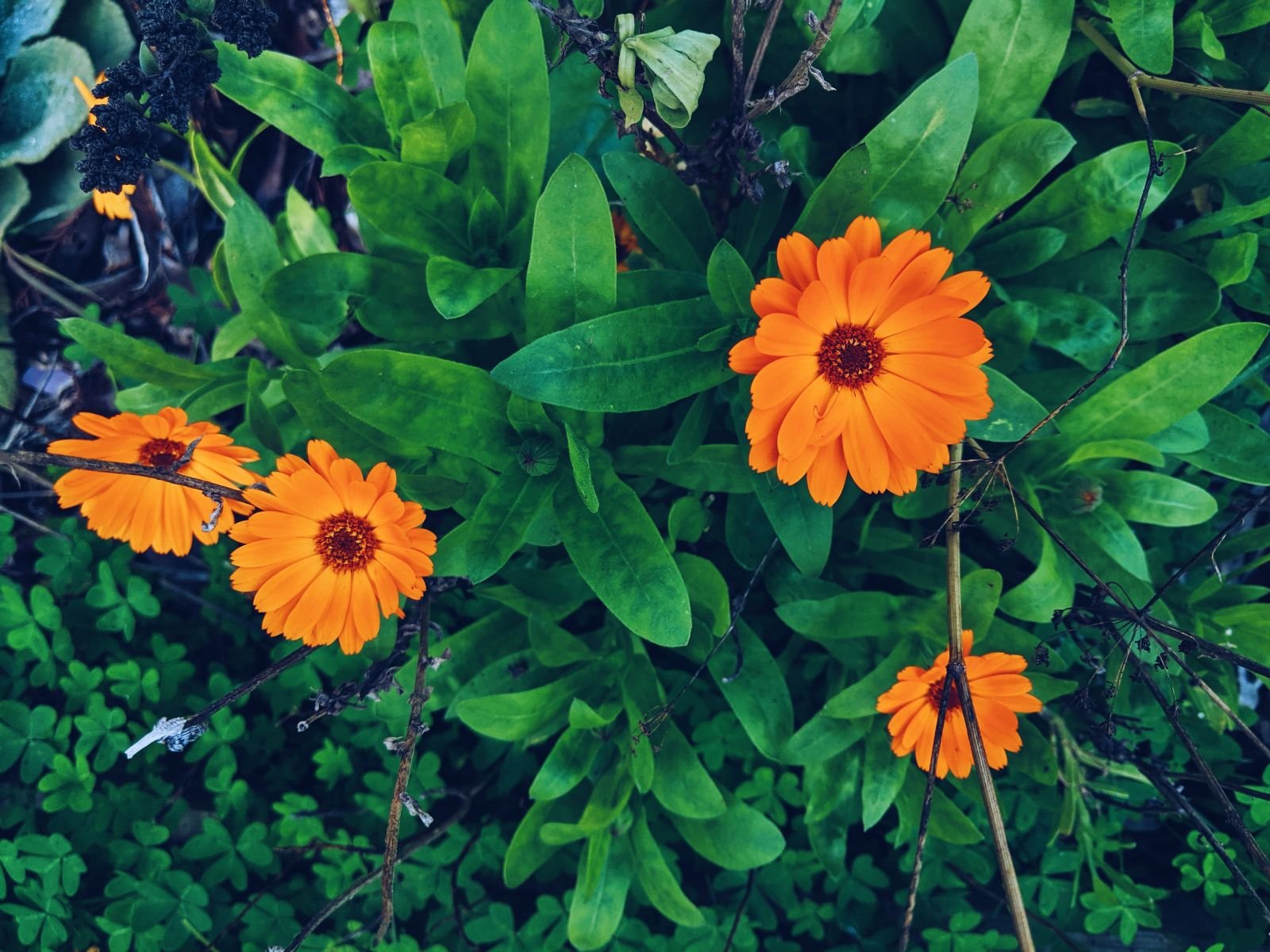Bathing with the Moon: Herbal Baths for the Lunar Phases
One of my favorite forms of herbal medicine and magick is the herbal bath. Simple and inexpensive, requiring no fancy equipment, and with the ability to use both fresh and dried herbs, herbal baths are a beautiful form of self and community care. Basically, herbal baths are teas that you bathe in. If you don't have access to a bath, you can use them as shower rinses, too. Herbal bath blends are incredibly fun to make with little ones in your life, coven mates, and magickal kin, as well as by yourself before your altar, amidst the plants of the garden, or in the quiet of your kitchen.
I've been using herbal baths as part of my Moon practice for many a year and they help me to embody a slow magick that spirals and flows, ebbs and rests, and strengthens the energetic and physical body against the pressures of endless work, productivity, and cultural expectation. Bathing with herbs is a deep ancestral practice, an honoring of our ancient bodies' need for warmth and feeling held, and a way to pause while cocooned in the waters of life. What I hope is that your Moon baths and observations of lunar time are richly radical, imbued with the magick of change, and an ongoing act of liberation, free from the idea that self-care is a cure-all (it's not) or that any of us has to go it alone (thank, Goddess).
What follows are general guidelines and then a few suggested recipes guided by the traditional western herbalism that I practice as well as my Pagan spirituality. As with all herbal medicine and magick remember that practicing an earth-affirming path of healing asks us to use what we have, adapt what we need, and carefully consider how and when we acquire resources. In other words, if you don't have Mugwort (Artemisia vulgaris) easily and responsibly accessible, that silvery Sage (Salvia officinalis) in your cupboard might do just as well. Systems of correspondences (i.e. why certain herbs are assigned to different Moon phases) are useful in that they connect us with the energy of tradition but our relationship to an herb and our need for a type of blend is just, if not more, important which is why innovation is a powerful magickal tool.
I've also included items beyond herbs that you might want to incorporate into your lunar bathing rituals - none of these are necessary but I do hope it inspires you to think about the crafting of your herbal bath and ways that you can bring beauty to it. A jar full of lunar herbs is an altar in miniature, the act of bathing a ritual, and the re-emergence from the waters a sort of gentle rebirth. The care and intention that we approach our herbal baths is as much part of the magick as any herb or stone we might be working with.
A final few notes. There are lots of phases of the Moon that you can observe, but I'll be focusing on the New, Full, and Dark of the Moon which is when I'm most likely in my own practice to have a lunar bathing ritual. You'll also find that I use a lot of the same herbs, in different proportions in the recipes - that's because these are my personal allies and the plants that I have kinship with. I'll list different herbs for each lunar phase, but you don't have to use different herbs for different phases but should feel free to work intimately and consistently with your beloved plant allies in different combinations. Finally, here is my basic herbal bath recipe and guidelines for herbal bathing.
The New Moon
In traditional western herbalism, herbs of the New Moon are considered hot and moist. Energetically what this is trying to communicate is that we are in a period of enlivening activity (i.e. life-giving heat) and these are the conditions needed to grow and develop (i.e. the moist warm soil needed to grow seeds). Magickally, the New Moon is considered a time of new beginnings, an auspicious period for starting new projects, work manifestation magick, and it's also a good time to energize any aspect of your life including spells and charms. The New Moon also carries the energy of endings (as a new cycle begins so an old one must end) which helps us to part with and give up that which is no longer needed in our life, so cleansing magick and cord cutting rituals are especially auspicious. For a more herbal medicine based perspective on New Moon herbs, come this way.
A quick note on timing. Different folks determine the New Moon at different times of the lunar cycle. For some, the New Moon is when the Moon is completely dark and not visible in the sky. For others, like myself, the New Moon is when you can see the first sliver of the Moon in the night sky after a period of complete dark. This was what I was taught and it also allows me to observe the period of the Dark of the Moon as an important and separate aspect of the lunar cycle. But there is no right way - it's all made up by people just like you and me, so follow what works for you.
New Moon Herbs: Angelica (Angelica archangelica), Basil (Ocimum spp.), Elder (Sambucus nigra), Lavender (Lavandula officinalis), Milky Oat (Avena sativa), Peppermint (Mentha piperita), Sage (Salvia officinalis). Mugwort (Artemisia vulgaris or your local variety) is considered a Moon herb for all phases.
My favorite herb for New Moon baths is Basil (Ocimum spp.) and especially Sacred Basil (Ocimum sanctum, tenuiflorum). I love how effective Basil is at moving energy throughout the body which helps to connect with the upwelling of energy present at the New Moon. It is also a great ally for removing unwanted energy and also helps to protect our energetic boundaries for the cycle ahead.
New Moon Herbal Bath
2 parts Basil (Ocimum spp.)
1 part Milky Oat (Avena sativa)
½ part Rose (Rosa damascena)
The Full Moon
Cold and dry herbs are the traditional correspondence found in western herbalism. Energetically, we're looking at the completed structure that is solid, livable, and created to last. No longer in the phase of ideas and creation, the Full Moon rises in the sky, a source of heightened and potent energy, fully realized. Magickally, the Full Moon is one of the most auspicious times to work magick, charge up charms, amulets, and other tools of the trade, as well as gather together with other magickal folk in reverie and celebration. For me, the Full Moon has always felt like a time of deep connection with my Witch ancestors, my current Witchen Kin, and those Witch folk who will emerge long after I'm gone. Watching the Full Moon rise in the sky has filled me with hope and a sense of holiness again and again and it feels like a prehistoric sort of ritual. Blessing the self, working magick for community healing and justice, and re-dressing the body in an energetic mantle of sacredness are all auspicious to do when the Moon is Full.
Full Moon Herbs: Lavender (Lavandula officinalis), Lemon Balm (Melissa officinalis), Meadowsweet (Filipendula ulmaria), Milky Oat (Avena sativa), Motherwort (Leonurus cardiaca), Mugwort (Artemisa vulgaris), Passionflower (Passiflora incarnata), Peppermint (Mentha piperita), Plantain (Plantago major), Sage (Salvia officinalis), Self-Heal (Prunella vulgaris).
It's hard to choose between Milky Oat and Rose as my primary Full Moon herb - so I won't! Milky Oat and Rose are some of my dearest teachers and to work with them at the Full Moon feels like traveling to a sacred circle of healing and magick. Milky Oat is my most beloved of nervous system herbs and acts as a tonic for the soul, helping us to feel held and nourished at any time and especially during the heightened energy of the Full Moon. The seeds feel like packets full of Moon milk. Rose is an herb of unfolding mystery and magick. The flower helps us to connect with the old and wise parts of ourselves having been with our species for millenia. To be held in our unfolding is why I like using these herbs together.
Full Moon Herbal Bath - Restorative
2 parts Milky Oat (Avena sativa)
1 part Mugwort (Artemisia vulgaris)
½ part Rose (Rosa damascena)
Full Moon Herbal Bath - Enlivening
1 part Peppermint (Mentha piperita)
½ part Lavender (Lavandula officinalis)
The Dark of the Moon
I almost always make my Dark of the Moon herbal bath blend a few days before since I don't typically make any sort of herbal remedies when the Moon is Dark. For me, Dark of the Moon work is usually of two varieties: deep rest or shadow work. The Dark of the Moon is a time to retreat from the world, go deep within (including deep rest), and recenter yourself before re-emerging into the world with the New Moon.
Dark Moon Herbs: Elder (Sambucus nigra), Hawthorn (Crataegus monogyna), Lavender (Lavandula officinalis), Mugwort (Artemisia vulgaris), Nettles (Urtica dioica), Passionflower (Passiflora incarnata), Sage (Salvia officinalis), Yarrow (Achillea millefolium).
Mugwort, my dudes. Mugwort is an herb that I love and can only use in small doses because of how powerfully it works on my body and through my energetic systems. I have learned this in unexpected and humorous ways again and again, so I make sure to approach Mugwort with a lot of respect as She is a powerful herb. In Anglo-Saxon tradition, Mugwort is called Una, oldest of herbs, and I feel that in my bones (here is a great in-depth look at the Nine Herbs Charm - you really should read the original out-loud to get a sense of just how rhythmic it is). The herb works to connect us to the liminal, enhance our dreamscapes, and loosen the spirit from the body if travelling through the worlds is what you require. In general, beyond my own sensitivity to the herb, I think that Mugwort is best enjoyed in small doses and I think it is more effective for dreamwork (especially lucid dreamwork) and promoting rest when smaller doses are used.
Dark of the Moon Herbal Bath - Rest & Dream Work
1 part Lavender (Lavandula officinalis)
1 part Passionflower (Passiflora incarnata)
½ part Mugwort (Artemisia vulgaris)
Dark of the Moon Herbal Bath - Shadow Work
1 part Elder (Sambucus nigra)
1 part Rose (Rosa damascena)
½ part Mugwort (Artemisia vulgaris)
Additions to Your Herbal Bath
Add an herb for the Moon sign. When I am trying to work with the specific energy of the sign that the Moon is in, I add in an herb associated with that Moon sign. You can find affirmations as well as links to full profiles of each sign of the zodiac here. You can also choose to always add an herb for your Moon sign into each bath blend.
Salt and epsom salt. Adding salt or epsom salt to your bath can be a way of helping us connect to our oceanic origins (in the case of salt) or assist with pain relief (in the case of epsom salt).
Honey. Honey is not only good for the skin but helps to sweeten the energy of whatever spell you're working.
Milk. Oat milk (preferably homemade) or your choice of milk is a beautiful addition to the bath and adds additional skin-soothing properties to the experience. Within folk magick milk is associated with the Moon because of its bright white color.
Stones. Along as you check to make sure that they are water-safe, gemstones can be added directly to your bath water. Or you can place them in your herbal blend to add their energy to the mix before water is added. Silver coins are another traditional addition to lunar blends.
Add moonwater. Adding water charged by the Full Moon or whatever Moon phase you're working with can be a powerful addition to your bathwater.
Flower or gem essences. Flower essences and gem essences are a simple way to support the emotional body. You can add in the flower essences of whatever herbs you're working with (something I love to do) or different essences.
Invoke the spirits, call your guides. I bless the water and call in certain holy ones of the waters before I bathe. It is part of transforming the mundanity of my bathroom to a energetic temple holding space for my ritual submersion. On a practical level, speaking sacred invocations and other holy words before immersing myself in my bath is a way to help shift my consciousness to the magickal working at hand.
Work with Nines. Hearkening to the magick of planetary squares, the primary sacred number of the Moon is nine. So you can stir your blend of herbs nine times, chant a spell over them nine times, or any other variation of working magick nine times. I like the addition of mindfulness that this adds to my practice, helping me to focus on the work at hand.
🌙
I hope you're feeling inspired to draw a bath (or magickal shower) next time you're feeling like working some lunar magick. Lunar baths are also a wonderful addition to lunar magick in general and I've written a whole series on the Moon phases and magick. You can find posts for all the phases below:
If you’re looking for a deeper dive into lunar healing and magick, how about learning about your personal lunar holy day each month or a path exploring your gifts as a healer?
Wherever the Moon cycle finds you, may your baths be lunar and your magick abundant!
This post was chosen by and made possible through patron support.
❤︎ Thanks, friends. ❤︎




